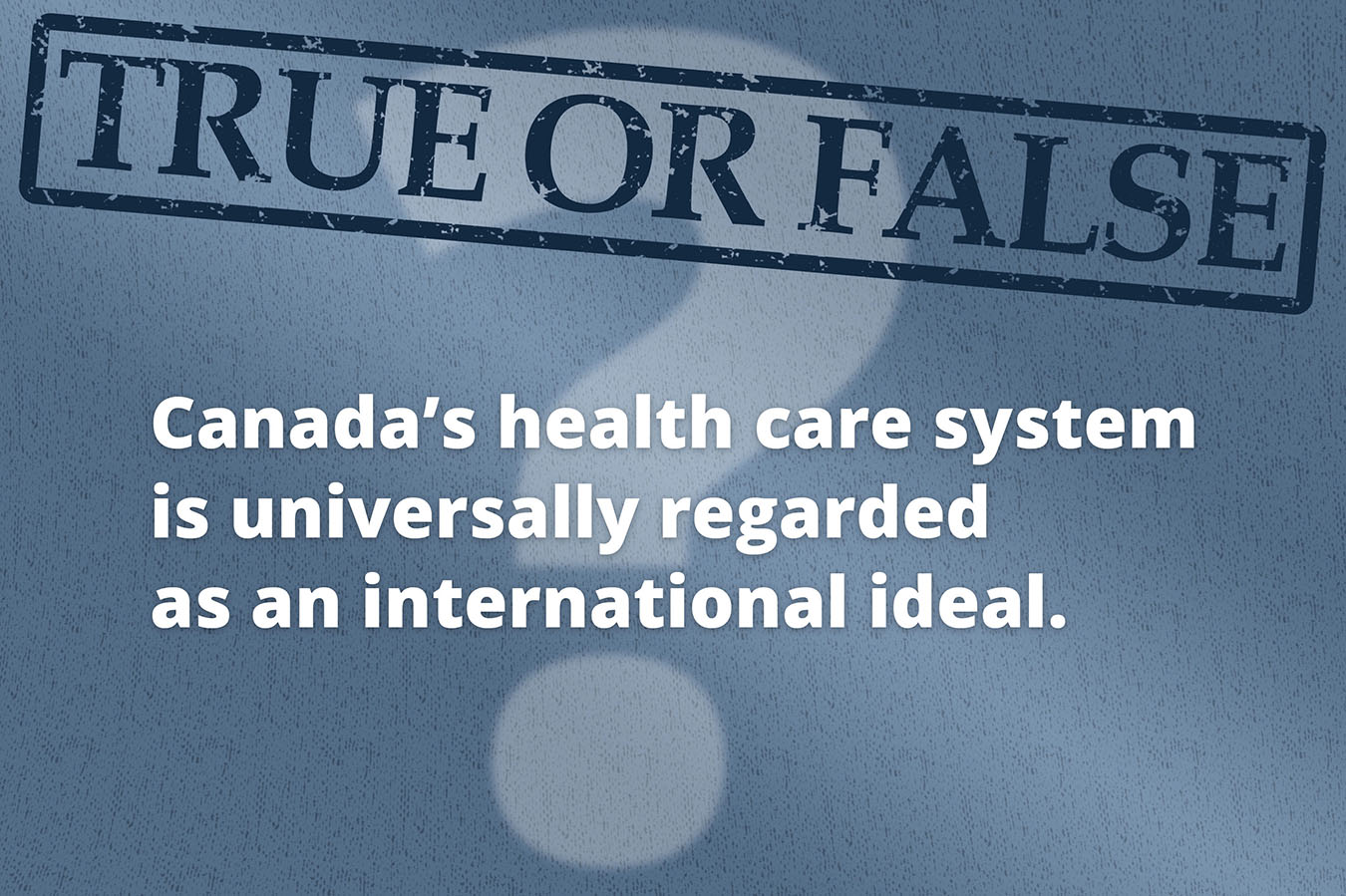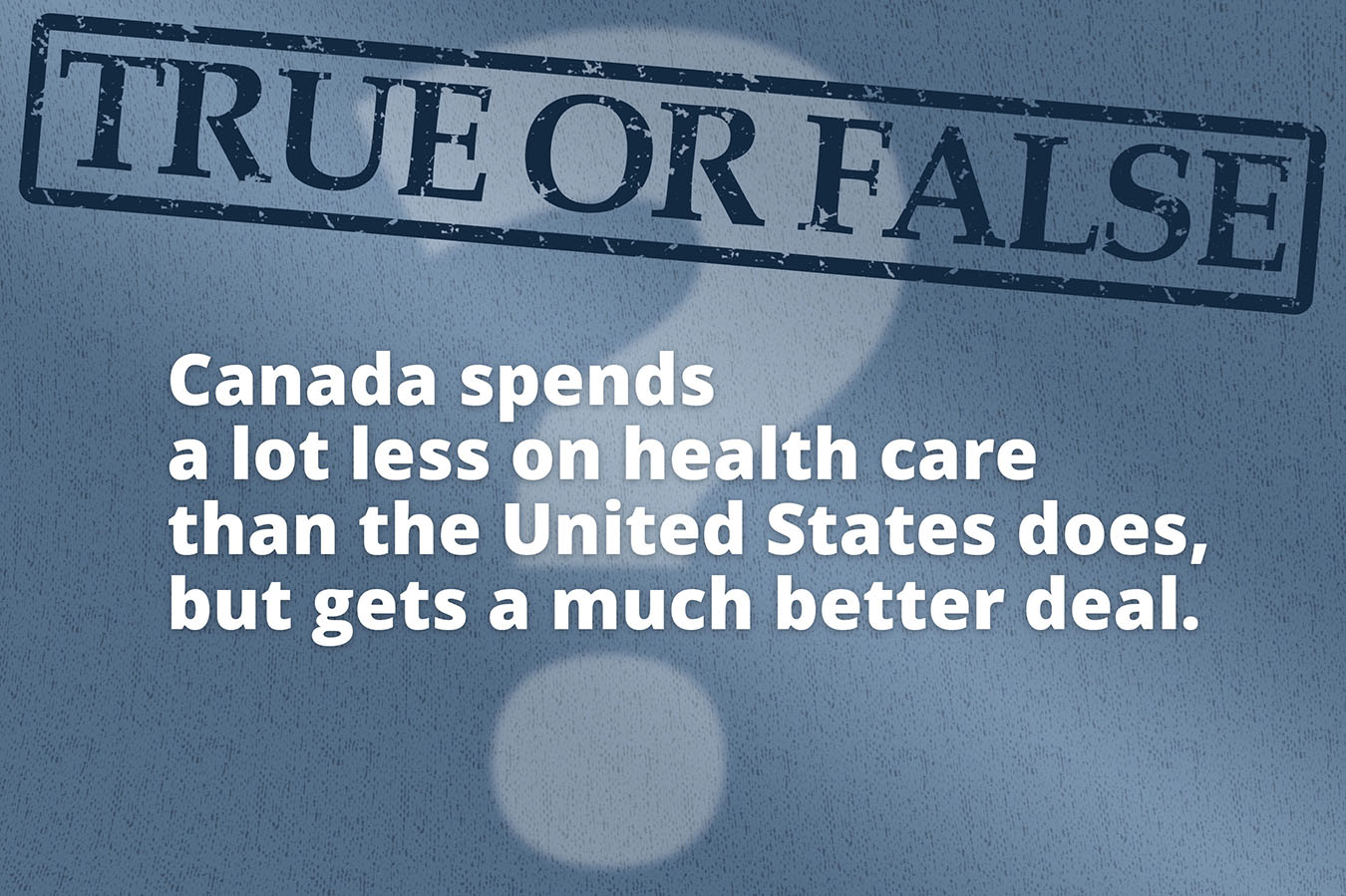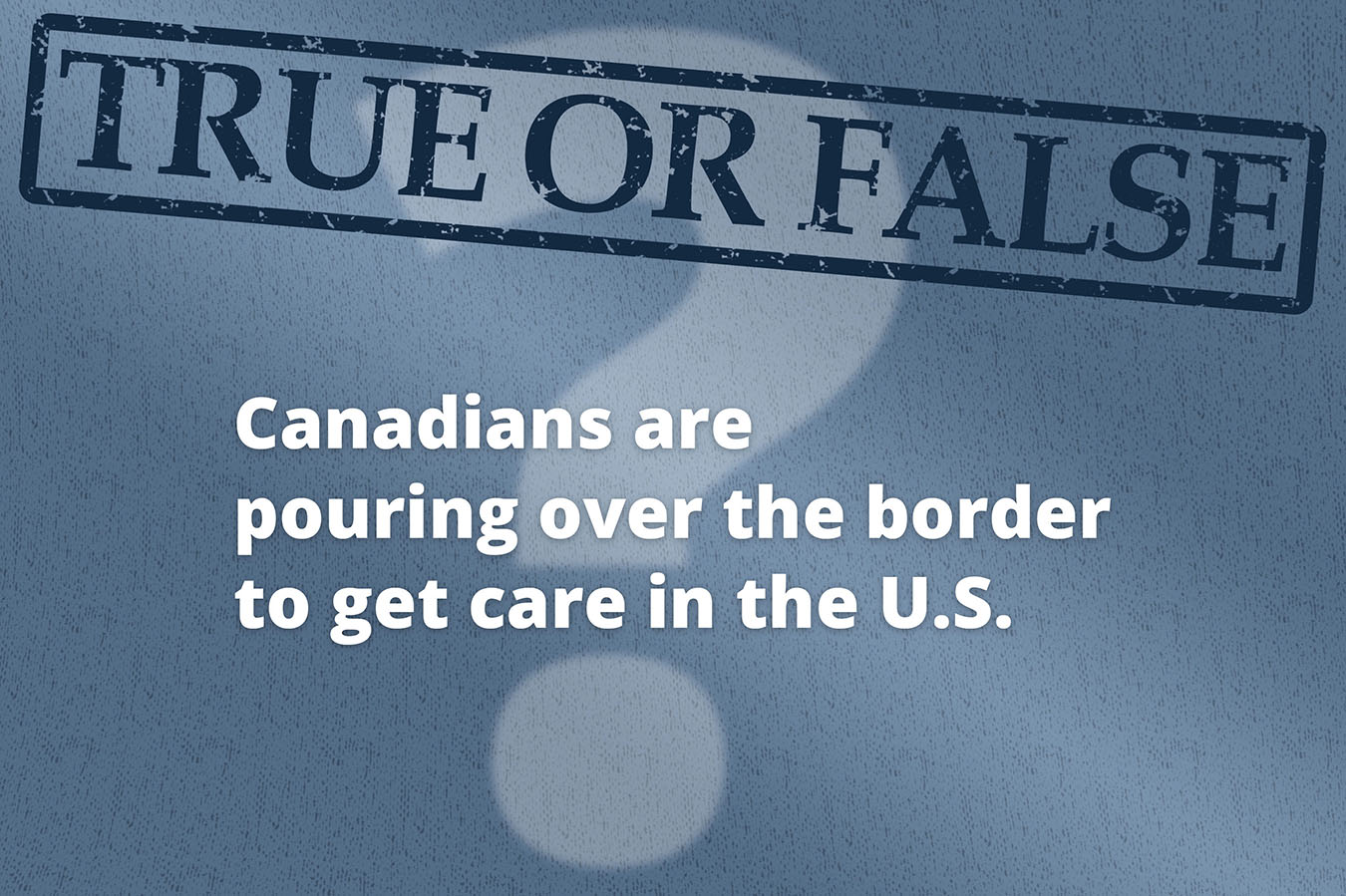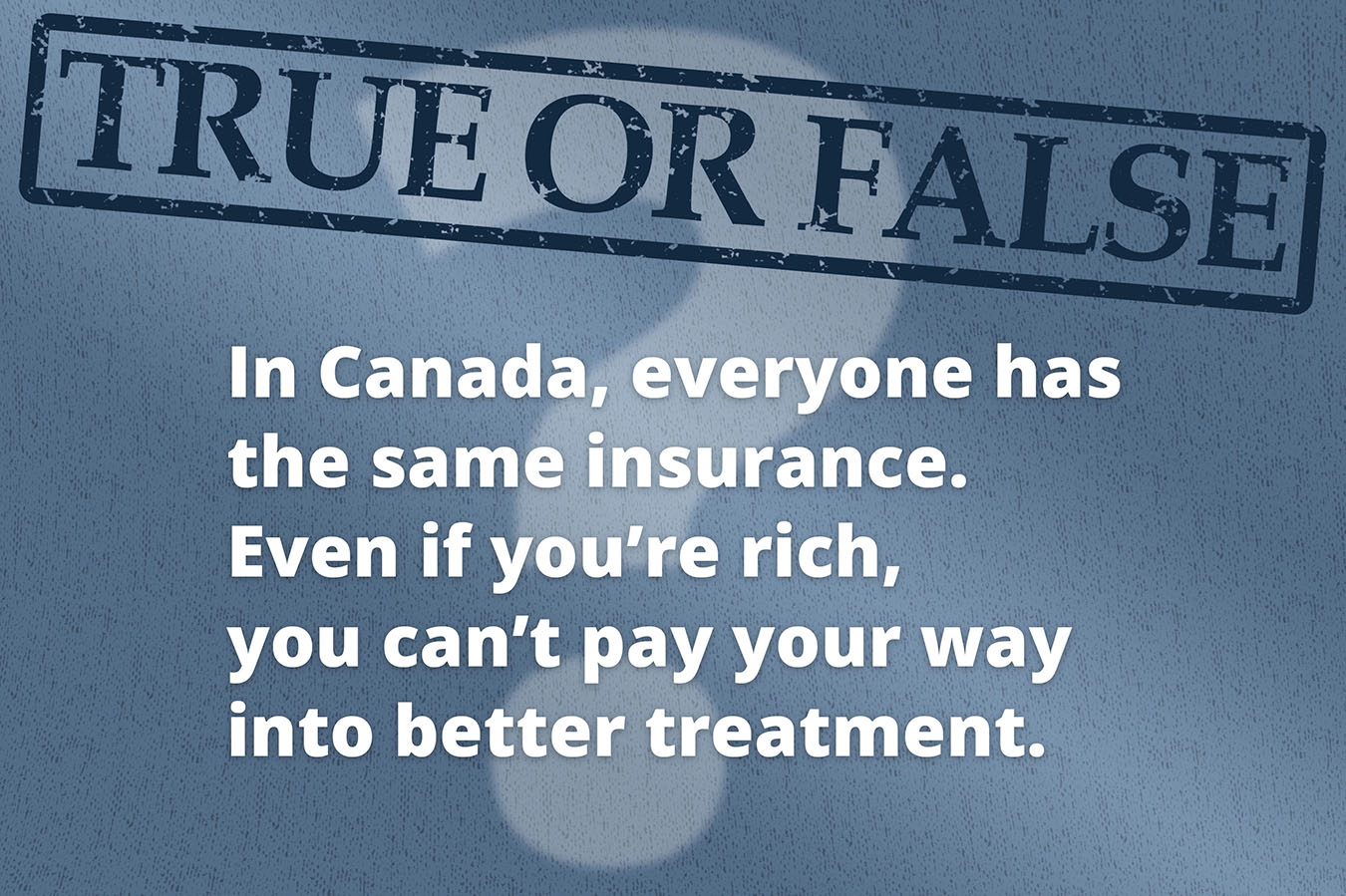In the American health care debate, “single-payer” is hardly a new concept.
The idea has grabbed headlines and sparked countless political and policy discussions, not to mention campaign advertisements. Other countries with single-payer systems include South Korea and Taiwan. But “single-payer” merely means that the government pays all the bills. The mechanics can vary from country to country.
Sen. Bernie Sanders (I-Vt.) recently visited Canada, touting that system’s benefits. How much do you really know about it?
Take KHN’s interactive challenge to test your understanding.


ANSWER: FALSE. The Commonwealth Fund, an American nonprofit, ranks Canada’s system above America’s — but it fares poorly compared with some others, placing ninth out of 11 Western systems. (The United States is in last place.) The Commonwealth Fund used metrics such as equity, access to health care and outcomes in its rankings.
“It’s unclear to me that the Canadian model is necessarily the solution the United States wants. And I think there may be other models that can be considered,” said Dr. Peter Cram, an internal medicine doctor and health care researcher who recently moved from Iowa to Toronto. “The narrow focus on the Canadian system — it shortchanges the array of options.”


ANSWER: FALSE. For hospitals and doctors, Canadian patients won’t pay a dollar out-of-pocket. But Canada doesn’t cover dental and vision care, prescription medications, psychotherapists and physical therapy. About two-thirds of Canadians get private insurance to supplement Canadian “Medicare,” as it’s known, which accounts for about 70 percent of Canada’s health spending.
“I’ve had patients who could not afford their diabetic medications, so they would become acutely unwell,” said Dr. Ali Damji, a family medicine resident in Toronto. “They would become sick enough to go to the hospital, and [then] we would pay for the treatment.”
That being said, Canada does have price controls for medications. So, compared to the United States, prescription drugs tend to be far cheaper.


ANSWER: TRUE. The Canadian Institute for Health Information estimates that in 2017 the country will have spent about 11.5 percent of its gross domestic product on health care. The United States, by contrast, spends about 18 percent. And life expectancy up north is greater, according to the World Health Organization. This constitutes one of Sen. Bernie Sanders’ favorite talking points. But Canadian officials still want to bring down the nation’s health care spending, especially as the population ages.
“We are seeing increased costs,” said Ontario Premier Kathleen Wynne, whose administration is testing new programs to address health spending.


ANSWER: FALSE. On the 2016 campaign trail, then-candidate Donald Trump said, “When they need a big operation, when something happens, they come into the United States in many cases, because their system is so slow.” This doesn’t appear to be the case.
No evidence suggests Canadians are fleeing en masse for treatment in the United States. A recent report suggesting this has come under scrutiny, with experts raising serious methodology concerns.
There are certainly circumstances when the Canadian government will transport a patient out of the country for care that is not available — or unavailable in a timely manner — in Canada. When this happens, it is covered by Canadian Medicare.


ANSWER: FALSE. Wait times in Canada are typically longer for non-emergency, specialty procedures — think knee surgeries, diagnostic MRIs or cataract surgery. But emergency care is prioritized and usually placed at the front of the line. In fact, research suggests that when Canadians are sick most experience wait times comparable to those of their American neighbors.
“That’s one falsehood: that there’s these ridiculous wait times,” said Nate Kreiswirth, a dual citizen who lives in Toronto. “If you actually have something that’s a serious condition, or something that is urgent, you’re not going to wait. You are not going to die because you’re waiting.”
Comparing Canadian and U.S. wait times is difficult and an often-politicized discussion, Cram noted. The United States also doesn’t track wait times as rigorously as its northern neighbor — especially for people who can’t afford medical care — so it’s difficult to truly compare.


ANSWER: TRUE. Everyone is equal under the eyes of Canadian Medicare. It’s illegal to buy private insurance that competes with the government’s, so wealthier Canadians can’t buy their way ahead of the queue. (In other countries with universal health care, such as Germany and Great Britain, people can opt out of national systems and buy privately.)
Of course, theory and practice aren’t in perfect sync. Research suggests low-income Canadians may have more difficulty getting timely primary care, even though the single-payer system doesn’t give doctors a reason to prefer wealthier patients. It’s unclear how widespread this is. But, says Dr. Irfan Dhalla, a Toronto-based health quality researcher and general internist, insurance alone can’t fix that.
“Humans are humans and there are always — in any system — humans with discriminatory attitudes toward indigenous people, or people who are low-income,” Dhalla said.


ANSWER: FALSE. Primary care doctors work for themselves, but their fees are negotiated and paid by the government.
There was a serious exodus of Canadian doctors in the 1990s, but that has since reversed. In the mid-2000s, more Canadian doctors were returning from the United States than leaving. At this point, research suggests, southern migration is negligible.
And 2014 data from the Canadian Medical Association suggests that more doctors may be moving the other way, leaving the United States to practice in Canada, to avoid headaches like insurance paperwork and claims processing necessary south of the border.


ANSWER: FALSE. Canada spends far less on health care than does the United States, but it too is grappling with the climbing cost of medical treatment. Health care accounts for almost 40 percent of provincial budgets.
“The government gives provincial governments a bunch of money, and they pay the doctors and say, ‘As long as people aren’t dying, and voters are happy, we’re OK,’” said Dr. Kaveh Shojania, a Toronto-based internist who researches patient safety and health care quality. “Now they’re starting to realize there’s more that needs to be done.”
Meanwhile, left-leaning advocates are pushing to expand the single-payer system so that Canada also covers prescription drugs.






